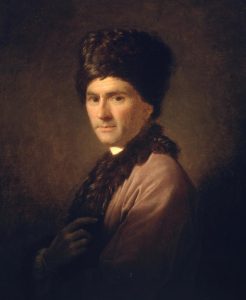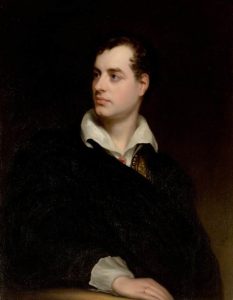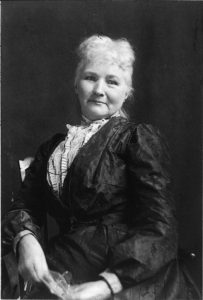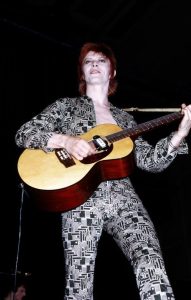Romantic Heroes: Ameliorating the Dark Side of Capitalism
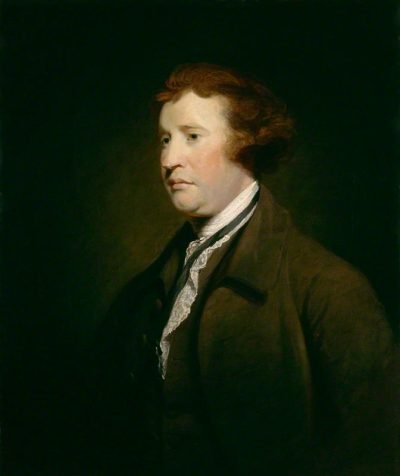
All Global Research articles can be read in 51 languages by activating the Translate Website button below the author’s name.
To receive Global Research’s Daily Newsletter (selected articles), click here.
Follow us on Instagram and Twitter and subscribe to our Telegram Channel. Feel free to repost and share widely Global Research articles.
***
Introduction
The rapid spread of the science-based Enlightenment (c1687-c1804) across Europe during the seventeenth and eighteenth centuries was a cause of much dismay to the reigning monarchies of the time. The source of their anxiety, the philosophes, were propagating a radical new range of ideas “centered on the value of human happiness, the pursuit of knowledge obtained by means of reason and the evidence of the senses, and ideals such as liberty, progress, toleration, fraternity, and constitutional government.”
The conservative reaction to such ideas was to declare the power of nature and the primacy of god as the controlling force in the universe. On an individual level, the emotions and spirituality were asserted to be more important than science and reason.
This early reaction to the Enlightenment, i.e., the emphasis on capricious feeling or overwhelmed emotions (‘the inflamed passions’) as described in the works of the Irish philosopher Edmund Burke (1729–1797), and later in the Romanticist (c1790s-c1850) movement, turned culture into a burden on society. This is because, from the idea of the cathartic terror of nature, to the Byronic romantic hero, and on to the superheroes of today, Romanticism has diverted people away from real change and real working-class heroes.
The Romanticist escape to Utopia, the remote, the exotic, and the unknown, is in stark contrast with the real lives of past leaders of communitarian movements who suffered, struggled and died for real social change. Now we live in stark, dark times, surrounded by media that is saturated with the Romanticist gloop of horror, terror, fantasy, science fiction, romantic egoism etc., that threatens to slow society down and trap us into infinite and endless imagination to the detriment of any progressive forms of social consciousness and societal change.
Edmund Burke’s sublime:”by the contagion of our passions”
Edmund Burke set out a new way of looking at nature not as a ‘demonstration of order but an invitation of reverence’. For example, this reverence can be seen in the language used by Johann Wolfgang von Goethe (1749–1832) in his book The Sorrows of Young Werther (1774). Goethe wrote: ‘From the forbidding mountain range across the barren plain untrodden by the foot of man, to the end of the unknown seas, the spirit of the Eternal Creator can be felt rejoicing over every grain of dust.’ [1]
This new emphasis on reverence for the Creator and fear of nature was a reaction to the Enlightenment desire to refocus society on man and an understanding of nature. In the writing of the Enlightenment philosophes, Nature was given meaning, not abstracted into the anger of a revengeful God. For Diderot,
“a picture of high mountains, ancient forests and immense ruins evoked episodes of classical or religious history. The roar of an invisible torrent led him to speculate on human calamities. Everything in nature was referred to man in society: ‘Man is born for society … put a man in a forest and he will become ferocious.’ For Rousseau, man only reached his highest insights when alone and humbled by the savage force of nature. Both were alike in their search for natural spontaneity, but what turned one towards society drove the other into solitude.” [2]
Jean-Jacques Rousseau (1712–1778) had also rejected the rationalism of the Enlightenment philosophes (the development of knowledge and the intellect), “in favor of a form of nonrational, spiritual “enlightenment” centered on the “holy and beneficent” inner voice of conscience engraved on our hearts by God.” [3]
Image: Jean-Jacques Rousseau. 1766 portrait of Rousseau wearing an Armenian papakha and costume, Allan Ramsay
Thus, Rousseau moved “away from the Enlightenment’s reliance on empiricism, reason, and knowledge towards a stress on the active nature of the mind and the inner spiritual life of the individual”. By doing this, “he helped to launch what would eventually develop into a full blown revolt against the rationalism and intellectualism of the eighteenth century in the name of religion, emotion, imagination,and the heart, themes central to the thought of the Romantic period that Rousseau helped to inspire.” [4]
Burke developed the concept of the sublime (great, elevated, or lofty thought or language) in his book, A Philosophical Enquiry into the Origin Of Our Ideas of the Sublime and Beautiful. He wrote:
“Whatever is fitted in any sort to excite the ideas of pain, and danger, that is to say, whatever is in any sort terrible, or is conversant about terrible objects, or operates in a manner analogous to terror, is a source of the sublime; that is, it is productive of the strongest emotion which the mind is capable of feeling.”
Burke changed the emphasis from description to drama, especially in his emphasis on passionate language to ‘inflame the heart’. He writes:
“We yield to sympathy what we refuse to description. The truth is, all verbal description, merely as naked description, though never so exact, conveys so poor and insufficient an idea of the thing described, that it could scarcely have the smallest effect, if the speaker did not call in to his aid those modes of speech that mark a strong and lively feeling in himself. Then, by the contagion of our passions, we catch a fire already kindled in another, which probably might never have been struck out by the object described.” [5]
Thus, the power of rhetoric (using ‘modes of speech’ combined with ‘strong and lively feeling’,’we catch a fire already kindled in another’) takes over from reality itself: “The influence of most things on our passions is not so much from the things themselves, as from our opinions concerning them; and these again depend very much on the opinions of other men, conveyed for the most part by words only.” [6]
In this way the passions of men can be inflamed by a strong use of imaginative rhetoric. As reason is secondary, the implications of such behaviour, such an idea, on a mass scale (passions creating a wildfire across nations) can later be seen in the wars of the twentieth century.
Also, to overemphasise the passions diminished the role of reason and rationalisation in individual acts. For example, as Diderot claimed, “it is wrong to attribute the crimes of men to their passions: it is their false judgements which are at fault. The passions always inspire us rightly, for they inspire us only with the desire for happiness. It is the mind that misleads us and makes us take false roads.” [7]
Romantic heroes:”misery in his heart”
If we combine Burke’s “ideas of pain, and danger,” with Rousseau’s “inner voice of conscience engraved on our hearts” we can see the beginnings of the construction of the Romantic hero in pursuit of his/her own passions, and who can be described thus:
“A romantic hero is an exceptional and often mysterious person, usually in exceptional circumstances. The collision of external events is transferred to the inner world of the hero, in whose soul there is a struggle of contradictions. As a result of this kind of reproduction, romanticism has extremely highlighted the value of the personality, inexhaustible in their inner depths, revealing its unique inner world. Man in romantic works is also embodied with the help of contrast, antithesis: on the one hand, she understood the crown of creation, and on the other – a frivolous toy in the hands of fate, unknown and unaffected forces that play with her feelings. Therefore, she often becomes a victim of her own passions.”
The characteristics of the Romantic hero tend to emphasise someone who has been “rejected by society and has themselves at the center of their own existence”, with various combinations of “introspection”, “wanderlust, melancholy, misanthropy, alienation, and isolation.”
Image: The Lord Byron FRS. Portrait by Thomas Phillips, c. 1813
The Byronic hero was popularised in Byron’s poem Childe Harold’s Pilgrimage (1812–1818) with the passions emphasied as “misery in his heart, a scorner of his kind, implacable in revenge, yet capable of deep and strong affection”. A solitary figure and resigned to suffering which was reflected in the trials and tribulations of Byron’s own life and death in Italy and Greece.
The Romantic hero can be seen as an individualist who suffers from psychological traumas associated with alienation from society and life itself.
Working class heroes: “complaints of the hungry proletariat”
As with the Romantic movement, the Romantic hero was a reaction to the changing world of the ancient regime‘s control and rule through aristocracy and monarchy. The rediscovered and popularised ideologies of republicanism, democracy and socialism took to the stage and soon provoked conservative reaction.
As Otto Grotewohl noted in 1948: “Romanticism sought models in the dark mysticism of the Middle Ages and viewed with complete contempt not only democracy and revolution but also the emancipation of the people”.
And although many of the romantics fled to the mountains or the sea to escape burgeoning capitalism, Pyotr Semyonovich Kogan wrote that “inevitably even in the work of such a poet as Hugo, the noise of the street and the complaints of the hungry proletariat burst in and drowned out the gloomy sounds of medieval organs and the tender songs of Oriental odalisques.”
Kogan criticises the Romantic interest in melancholy music and the other-worldly exotic of Orientalism. As the practical materialism (science-based) of the proletariat excluded Romanticism (irrationalism), among the working classes anti-social individualism was replaced with collectivism.
The many aspects of the working class condition e.g. hunger, loneliness, alienation, poverty, joblessness, depression or lacking in health care (many aspects actually glorified in the Romantic hero) are reversed in the common aim of working-class solidarity and activism. Thus, the characteristics of the working class hero are the opposite of the romantic hero.
The male and female working class heroes given to us by history are ordinary people who rose above their living and social conditions to create a better world for all, fighting for better wages and working conditions, birth control and health services for both workers and migrants. Some examples:
Image: Mother Jones, American labor activist.
“Mother Jones (1837 – 1930) Mary ‘Mother’ Jones was a trade union activist who helped to organise strikes to campaign for better pay and conditions for workers. She was an organiser for “The Knights of Labor” and the American Mine Workers Union. She sought to enforce child labour laws. Referred to as ‘the most dangerous women in America’ she revelled in her cause to liberate the working class of America.
Margaret Sanger (1879 – 1966) Sanger was a member of the New York Socialist Party and supported striking workers in the early 1910s. She published her first articles on birth control in a socialist magazine. After the First World War, she concentrated on promoting birth control and allowed her socialist policies to elapse.
Aneurin Bevan (1897–1960) Bevan was the son of a miner and left school at the age of 13 to work in the mines himself. He became active in local union politics and rose in the Labour Movement to become a key figure of the Party. After the 1945 election, he set up the new National Health Service, which offered universal health care.
Walter Reuther (1907 – 1970) Reuther was an influential trade union leader who took on the major car firms and gained recognition for unions. Under his leadership, UAW became a major force, gaining substantial concessions from car companies. For his campaign to win workers rights, he was beaten up by Ford’s men and subject to two assassination attempts.
Cesar Chavez (1927 – 1993) Chavez was the son of Latino-immigrants and started life working for very low wages as an agricultural labourer. He became an American labor leader and civil rights activist who co-founded the National Farm Workers Association. Chavez sought to create better working conditions for migrant farm workers.”
Modern romantics: From Ziggy Stardust to Harry Potter
There are many contemporary working-class heroes that we don’t hear about as the mass media will inevitably exclude anyone that opposes the current global dominance of neo-liberal ideology. What is promoted, however, are the abstracted, alienated, other-worldly characters such as superheroes: bourgeois heroes, guilt-ridden for not carrying out the claims of universality of their class (liberté, égalité, fraternité), that can only try to ameliorate the down side of capitalism: the proliferation of criminality.
The Romantic heroes of today have not changed much from those of the nineteenth century. They still have the same aloof characteristics of difference, alienation and disillusionment with the same desires:
“A longing for home and a longing for what is far off- these are the feelings by which the romantics are torn hither and thither; they miss the near-at-hand, suffer from their isolation from men, but, at the same time they avoid the other men and and seek zealously for the remote, the exotic and the unknown. They suffer from their estrangement from the world, but they also accept and desire it. Thus Novalis defines romantic poetry as the “the art of appearing strange in an attractive way, the art of making a subject remote and yet familiar and pleasant,” and he asserts that everything becomes romantic and and poetic, “if one removes it in a distance,” that everything can be romanticized, if one “gives a mysterious appearance to the ordinary, the dignity of the unknown to the familiar and an infinite significance to the finite.”” [8]
Image: David Bowie performing as Ziggy Stardust at Newcastle City Hall in 1972.
“The escape to Utopia and the fairy tale, to the unconscious and the fantastic, the uncanny and the mysterious, to childhood and nature, to dreams and madness, were all disguised and more or less sublimated forms of the same feeling, of the same yearning for irresponsibility and a life free from suffering and frustration – all attempts to escape into that chaos and anarchy against which the classicism of the seventeenth and eighteenth centuries had fought at times with alarm and anger, at others with grace and wit, but always with the same determination.” [9]
The forces of reason and science – classicism and the Enlightenment – opposed the attempted escapism of the day into ‘chaos and anarchy’. While the determination of the philosophes to fight against darkness and irrationalism may have been a losing battle (with the eventual rise of Romanticism), it was not a completely lost battle as many of the reforms advocated by the philosophes are societal norms today. However, the role of the ‘passions’ (the heart over the head), the emphasis on emotion over reasoned thinking (which played such a huge role in the development of Romanticism) is still a worrying issue given the domination of Romanticism as the main ideology in the globalised culture of today. One could argue that the Romantic hero cannot exist without media attention, while the working-class hero has to continue to organise deprived of it.
*
Note to readers: Please click the share buttons above. Follow us on Instagram and Twitter and subscribe to our Telegram Channel. Feel free to repost and share widely Global Research articles.
Caoimhghin Ó Croidheáin is an Irish artist, lecturer and writer. His artwork consists of paintings based on contemporary geopolitical themes as well as Irish history and cityscapes of Dublin. His blog of critical writing based on cinema, art and politics along with research on a database of Realist and Social Realist art from around the world can be viewed country by country here. Caoimhghin has just published his new book – Against Romanticism: From Enlightenment to Enfrightenment and the Culture of Slavery, which looks at philosophy, politics and the history of 10 different art forms arguing that Romanticism is dominating modern culture to the detriment of Enlightenment ideals. It is available on Amazon (amazon.co.uk) and the info page is here. He is a Research Associate of the Centre for Research on Globalization (CRG).
Notes
[1] The Enlightenment by Norman Hampson (Penguin, 1990) p206
[2] The Enlightenment by Norman Hampson (Penguin, 1990) p206
[3] Rousseau’s Counter-Enlightenment by Graeme Garrard (State Uni. of NY Press, 2003) p84
[4] Rousseau’s Counter-Enlightenment by Graeme Garrard (State Uni. of NY Press, 2003) p84
[5] The Enlightenment by Norman Hampson (Penguin, 1990) p204
[6] The Enlightenment by Norman Hampson (Penguin, 1990) p204
[7] The Enlightenment by Norman Hampson (Penguin, 1990) p192
[8] The Social History of Art, V3, by Arnold Hauser (Vintage, 1958) p174/5
[9] The Social History of Art, V3, by Arnold Hauser (Vintage, 1958) p174/5
Featured image: Edmund Burke MP. Portrait by Joshua Reynolds, c. 1769


